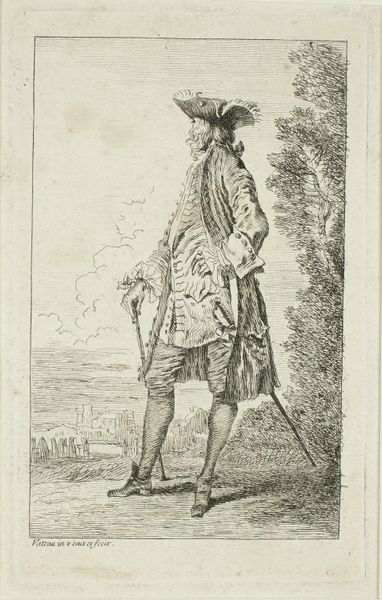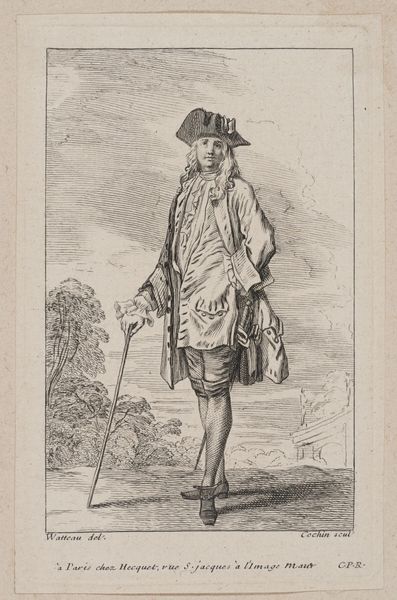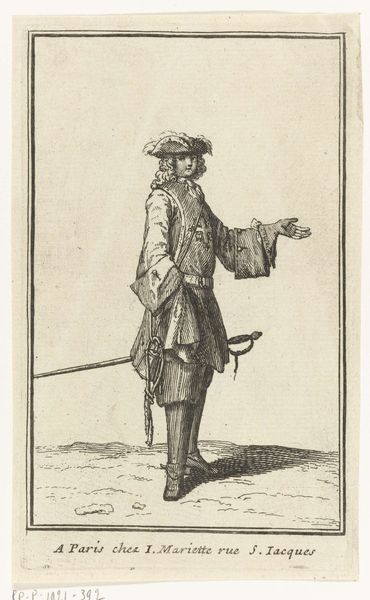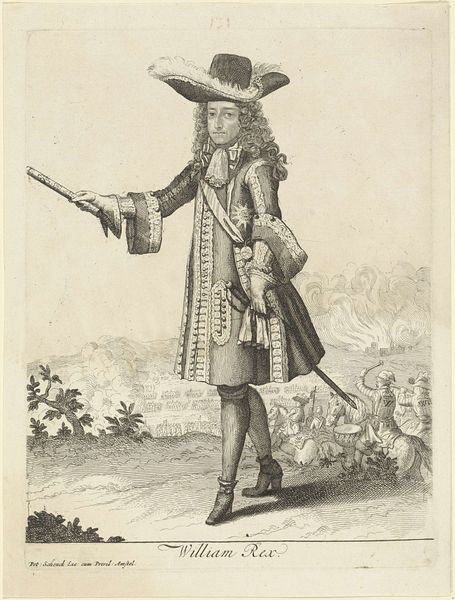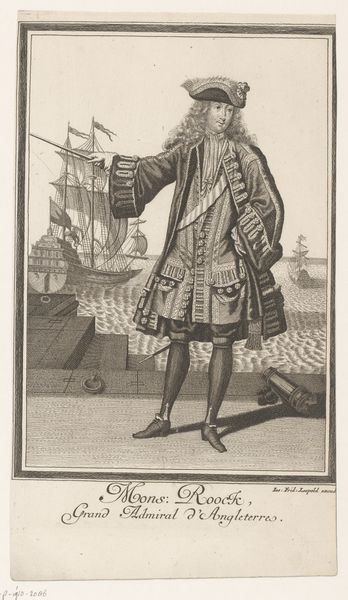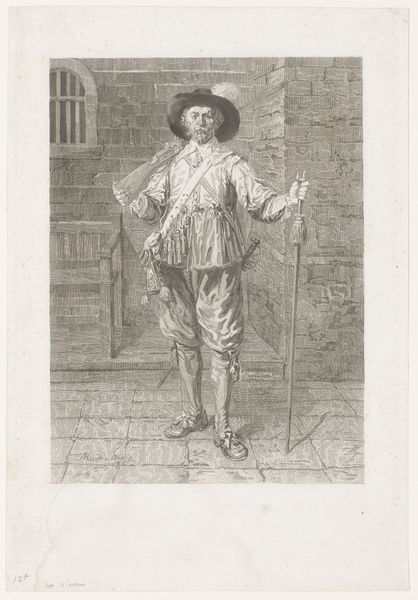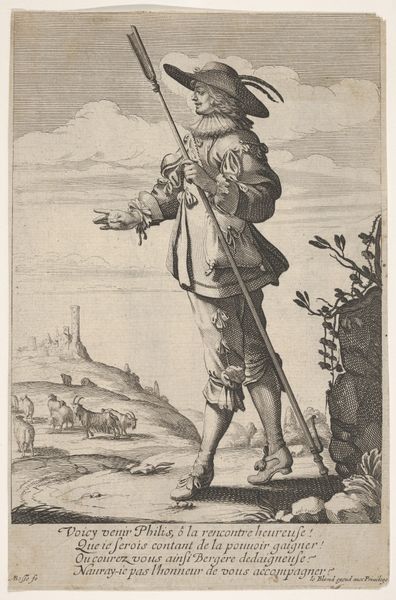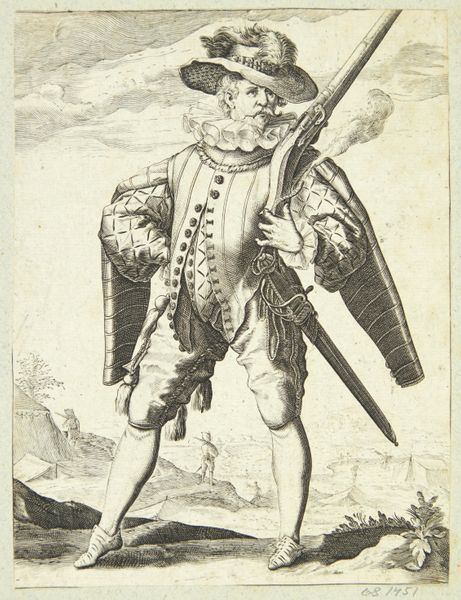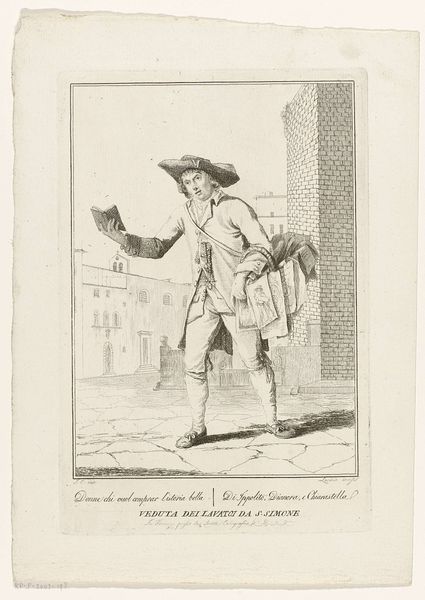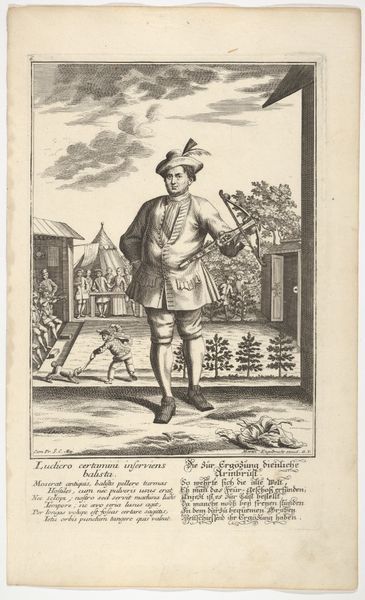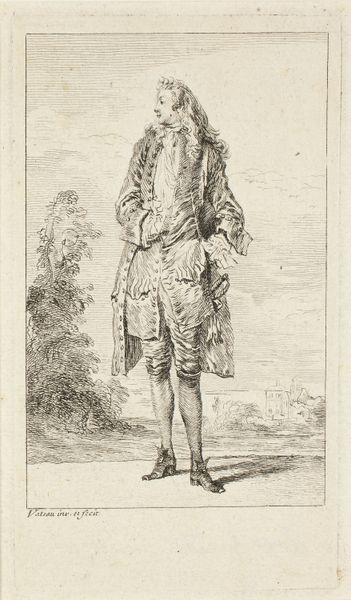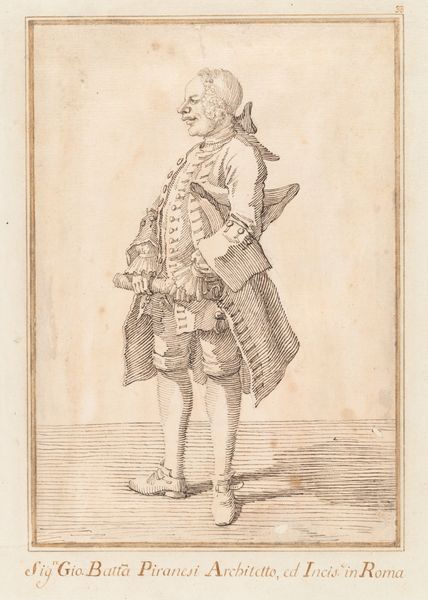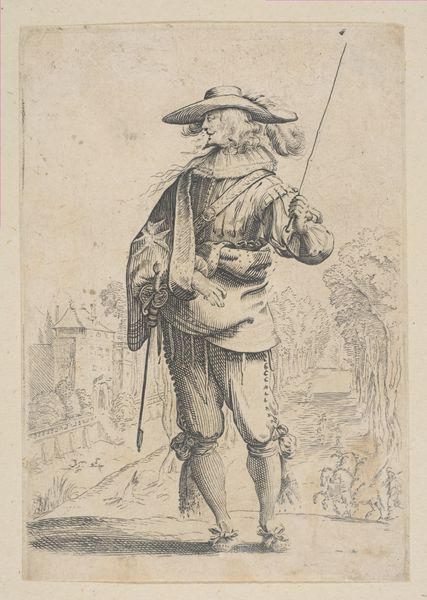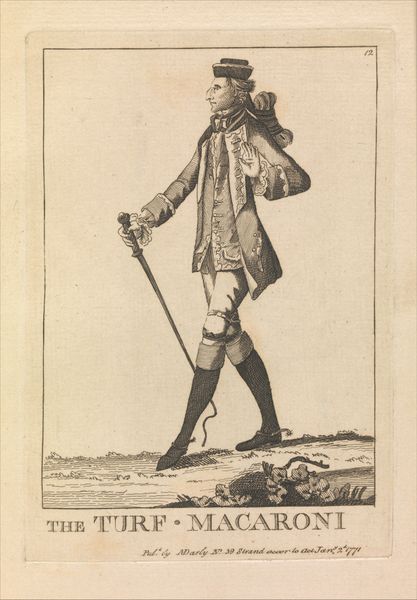
print, engraving
#
portrait
#
baroque
# print
#
old engraving style
#
genre-painting
#
engraving
Dimensions: height 157 mm, width 105 mm
Copyright: Rijks Museum: Open Domain
Editor: Here we have “Fashion and Elegance: French Fashions of the 1720s,” an engraving from 1725 by François Octavien. It strikes me as incredibly mannered, a snapshot of self-conscious elegance. What’s your take? Curator: Mannered, yes, absolutely! It’s fascinating, isn't it, how an image can speak volumes about societal performance? Octavien's focus wasn't just on rendering fabrics— though the texture is compelling for an engraving! — but on capturing the very essence of status and role in early 18th-century French society. Do you see how the figure’s posture and attire tell us a story? Editor: It's all about the pose, right? Relaxed, but undeniably aristocratic. All that lace must have been expensive. Curator: Indeed. This isn't just fabric; it's currency, a visual shorthand for power and privilege. I always wonder, when looking at portraits like these, if they ever felt weighed down by the expectations that came with the clothes. Did the gilded cage chafe, perhaps? What about the landscape behind him - does that tell you anything? Editor: It seems kind of vague... not really individualized at all, more like a stage set. Curator: Precisely! That stylized landscape reinforces the constructed nature of identity during the Baroque era. It’s less about raw, individual spirit and more about embodying an ideal. A curated performance on the stage of life. I think this helps unlock so many layers beneath this image. What a curious piece to ponder, don't you think? Editor: Definitely. I'm going to be thinking about gilded cages for days! Thank you!
Comments
rijksmuseum about 2 years ago
⋮
During the early 18th century small series of costume plates reported on the fashion of the day. Women wore the loose-fitting robe volante, also called a ‘sack-backed gown’ in English, over which women sometimes added a short, hooded cloak known as a bagnolette. Men dressed in long coats over a waistcoat and knee-breeches. Pig-tail wigs were adorned with large bows, and tricorne hats were tucked under the arm rather than worn on the head. The two large prints from around 1760 show Parisians out for a stroll. Curiously, the women wear wide paniers (hoop skirts) for their promenade on the ramparts. In the caption underneath, they are condemned as silly slaves of fashion who blindly follow the dictates of the latest trends.
Join the conversation
Join millions of artists and users on Artera today and experience the ultimate creative platform.
